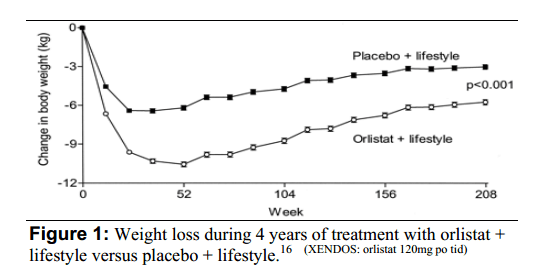B12 Shots for Weight Loss
Here you will find information about srestvah for weight loss and how to overcome obesity.
Monday, May 20, 2013
Quick Facts on Obesity
• The incidence of obesity is rising.
• In 2004, approximately 23% of adult Canadians were
obese & 36% were overweight.
• Reducing weight by only 5-10% can reduce the risk of
cardiovascular (CV) disease, diabetes & comorbidites.
• There is debate as to whether Body Mass Index (BMI) is
the best risk predictor for obesity as it does not take into
account fat-free mass, or the abdominal fat shown to
contribute to CV risk. A measurement of waist
circumference or the waist:hip ratio is a better predictor
of metabolically active visceral fat and disease risk.
• “1lb (0.45kg) = 3500 calories”. Reducing energy intake
or increasing energy expenditure by 500 calories/day will
result in losing about 1lb (½ kg) in one week.
• 1kg weight loss Ö ~1cm decrease in waist circumference
• Removal of adipose fat tissue via liposuction does not
achieve metabolic benefits of weight loss.
Monday, May 13, 2013
Weight Loss: Other Options.
• For patients with impaired glucose tolerance (IGT),
lifestyle changes decrease the risk of developing
diabetes; however lifestyle may be hard to
maintain. Drugs such as metformin and
acarbose may also be useful for IGT/weight loss.
{Rosiglitazone ↓ progression to diabetes, but ↑HF, edema & wt.}
• Metformin is useful for obese patients with Type
2 diabetes (providing no contraindication) for its
beneficial outcomes and weight loss potential.
• Drugs known to decrease morbidity & mortality in
patients with CV risk should be considered. (e.g.
ASA, antihypertensives and statins).
• Drugs that should not be used for weight loss:
o thyroid hormone: may cause bone loss & arrhythmias
o amphetamines (eg. Adderal)
• New Drug: Rimonibant (Not yet in Canada)
o A cannabinoid (CB1) receptor blocker with favourable
changes in weight (-6kg/1yr 20mg daily) and cardiometabolic
risk factors (↓waist circumference ↓TG; ↑HDL). Side effects
(e.g. nausea, anxiety, depression), a high drop-out rate >45%
and lack of clinical outcome trials warrant caution.
Monday, May 6, 2013
Weight Regain With Continued Therapy
• There generally appears to be a trend towards
partial weight regain despite continued therapy.
(e.g. orlistat, XENDOS trial - Figure 1). This may
be due in part to the natural history of aging.
Monday, April 29, 2013
Are Weight Loss Drugs Safe?
• Since 1997, 6 weight loss drugs have been
removed from the market:
o Fenfluramine & dexfenfluramine (heart
valve abnormalities, primary pulmonary HTN);
o phenylpropanolamine (strokes in females);
o phentermine, diethylpropion, & mazindol
(discontinued by manufacturers;
concerns with abuse and adverse events CNS & CV).
• Sibutramine was temporarily suspended from the
market in Italy, citing tachycardia, hypertension,
arrhythmia & cardiac arrest. An increase in
BP of 1-3mmHg & heart rate of 4-5 beats/min can
result from sibutramine use; however it is unclear
if any increase in cardiovascular risk is offset by
the reduction in body weight.
• Orlistat is minimally absorbed (<5%); however,
tolerability due to GI adverse events is an issue.
{Discontinuation GI, Lab ~2x vs placebo 8% vs 4%.}
Absorption of fat soluble vitamins is decreased,
yet remains within range (but a daily multivitamin
is recommended). The FDA USA is considering
approving a 60mg strength for OTC sale.
• Long term safety has not yet been established.
Adverse reaction reporting is encouraged.
Monday, April 22, 2013
Do Weight Loss Drugs Work?
• In the short term, weight loss drugs may provide a
modest reduction in body weight (<5kg at 1 year;
See Table 1).
Whether long-term outcome
benefits will result is yet to be established.
• Sibutramine & Orlistat have been shown to reduce
and, to some extent, maintain weight loss.
{No additional benefit when agents combined.}
• Drug therapy alone is insufficient as trials also
included lifestyle modification co-interventions.
• Weight regain is common upon discontinuation.
Monday, April 15, 2013
Weight Loss Therapy Options.
Lifestyle & behavioural modifications:
• Lifestyle interventions are recommended for all
overweight patients.
They should be continued
even if medication or surgery options are used.
E.g. ŠConsider membership at a suitable gym
e.g. Curves
ŠLimit computer & TV “screen-time” for kids
Drug therapy:
• The role of weight loss drugs is of some debate.
Limited long-term effectiveness and risks must be
weighed against the complications associated with
obesity such as diabetes and heart disease.
• A 6 month trial of diet, exercise & behavioural
therapy is recommended prior to considering drug
therapy.
Drug therapy may be considered in
select patients: obese patients (BMI ≥30kg/m) or
those with a BMI ≥27 kg/m + 1 risk factor
(diabetes, hypertension, hyperlipidemia, coronary
artery disease or sleep apnea). Safety, efficacy
and overall costs should be considered.
Surgery (e.g. Roux-en-Y gastric bypass or duodenal switch):
• Surgery may be considered in select patients
{obesity class III (BMI≥40 kg/m) or obesity class II (BMI 35-
39.9 kg/m) + ≥1 severe obesity related medical complications}.
• Mortality rates (generally between 0.1%-1.1%) vary
with surgery type and experience of centre.
Monday, April 8, 2013
Weight Loss Management
• Obesity is a chronic condition requiring a
long-term management plan.
• Goals should be individualized and include weight
loss, blood pressure, blood glucose, and lipids.
• Suggested initial goal: 5-10% weight loss in 6 mo.
• Lifestyle & behavioural modifications, such as
diet & exercise, are the cornerstone of therapy. A
multidisciplinary approach is ideal.
• Assess patients for their risk of obesity-related
health risks, weight history, previous weight loss
attempts, and current medications that may cause
weight gain (e.g. antipsychotics, antidepressants,
diabetic medications, anticonvulsants & steroids).
• Whenever possible, consider choosing drugs with
lower potential to cause weight gain. (See bottom
notes on Weight Loss Agents Comparison Chart.)
Subscribe to:
Comments (Atom)




